PN CAPSTONE NCLEX QUESTIONS_4.(2021 Retake)
Document Content and Description Below
1. Which intervention is appropriate for the nurse caring for a male client in severe pain receiving a continuous I.V. infusion of morphine? a. Assisting with a naloxone challenge test before therap... y begins b. Discontinuing the drug immediately if signs of dependence appear c. Changing the administration route to P.O. if the client can tolerate fluids d. Obtaining baseline vital signs before administrating the first dose. 2. When caring for a client who has a colostomy created as part of a regimen to treat colon cancer, which activities would help to support the client in accepting changes in appearance or function? Select all that apply. a. Explain to the client that the colostomy is only temporary b. Encourage the client to participate in changing the ostomy c. Obtain a psychiatric consultation d. Offer to have a person who is coping with a colostomy visit e. Encourage the client and family members to express their feelings and concerns. 3. The nurse has received in report that the client receiving chemotherapy has severe neutropenia. Which of the following does the nurse plan to implement? Select all that apply. a. Assess for fever b. Observe for bleeding c. Administer Neulasta d. Do not permit fresh flowers or plants in the room e. Do not allow his 16 year old son to visit f. Teach the client to omit raw fruits and vegetables from his diet. 4. Which of the following findings would alarm the nurse when caring for a client receiving chemotherapy who has a platelet count of 17,000/mm3 a. Increasing shortness of breath b. Diminished bilateral breath sounds c. Change in mental status d. Weight gain of 4 pounds in 1 day 5. A 35 years old client with ovarian cancer is prescribed hydroxyurea (Hydrea), an antimetabolite drug. Anti-metabolites are a diverse group of antineoplastic agents that interfere with various metabolic actions of the cells. The mechanism of action of antimetabolites interferes with: a. Cell division or mitosis during the M phase of the cell cycle b. Normal cellular processes during the S phase of the cell cycle c. The chemical structure of deoxyribonucleic acid (DNA) and chemical binding between DNA molecules (Cell cycle-nonspecific). d. One or more stage of ribonucleic acid (RNA) synthesis, DNA synthesis, or both (cell cycle-nonspecific) 6. The ABCD method offers one way to assess skin lesions for possible skin cancer. What does the A stand for? a. Actinic b. Asymmetry c. Arcus d. Assessment 7. When caring for a male client diagnosed with a brain tumor of the parental lobe, the nurse expects to assess: a. Short-term memory impairment b. Tactile agnosia c. Seizures d. Contralateral homonymous hemianopia 8. A female client is undergoing tests for multiple myeloma. Diagnostic study findings in multiple myeloma include: a. A decreased serum creatinine level b. Hypocalcemia c. Bence Jones protein in the urine d. A low serum protein level 9. A 35 year old client has been receiving chemotherapy to treat cancer. Which assessment finding suggests that the client has developed stomatitis (inflammation of the mouth)? a. White, cottage cheese-like patches on the tongue b. Yellow tooth discoloration c. Red, open sores on the oral mucosa d. Rust-colored sputum 10. During chemotherapy, an oncology client has a nursing diagnosis of impaired oral mucous membrane related to decreased nutrition and immunosuppression secondary to the cytotoxic effects of chemotherapy. Which nursing intervention is most likely to decrease the pain of stomatitis? a. Recommending that the client discontinue chemotherapy b. Proving a solution of hydrogen peroxide and water for use as a mouth rinse c. Monitoring the client’s platelet and leukocyte counts d. Checking regularly for signs and symptoms of stomatitis 11. What should a male client over age 52 do to help ensure early identification of prostate cancer? a. Have a digital rectal examination and prostate-specific antigen (PSA) test done yearly. b. Have a transrectal ultrasound every 5 years c. Perform monthly testicular self-examinations, especially after age 50 d. Have a complete blood count (CBC) and blood urea nitrogen (BUN) and creatinine levels checked yearly 12. A male client complains of sporadic epigastric pain, yellow skin, nausea, vomiting, weight loss and fatigue. Suspecting gallbladder disease, the physician orders a diagnostic workup, which reveals gallbladder cancer. Which nursing diagnosis may be appropriate for this client? a. Anticipatory grieving b. Impaired swallowing c. Disturbed body image d. Chronic low self-esteem 13. A male client is in isolation after receiving an internal radioactive implant to treat cancer. Two hours later, the nurse discovers the implant in the bed linens. What should the nurse do first? a. Stand as far away from the implant as possible and call for help b. Pick up the implant with long-handled forceps and place it in a lead-linen container c. Leave the room and notify the radiation therapy department immediately d. Put the implant back in place, using forceps and a shield for self-protection, and call for help 14. Jeovina with advance breast cancer is prescribed tamoxifen (Nolvadex). When teaching the client about this drug, the nurse should emphasize the importance of reporting which adverse reaction immediately? a. Vision changes b. Hearing loss c. Headache d. Anorexia 15. A female client with cancer is being evaluated for possible metastasis. Which of the following is one of the most common metastasis sites for cancer cells? a. Liver b. Colon c. Reproductive tract d. White blood cells (WBCs) 16. A 34-year old female client is requesting information about mammograms and breast cancer. She isn’t considered at high risk for breast cancer. What should the nurse tell this client? a. She should have had a baseline mammogram before age 30 b. She should eat a low-fat diet to further decrease her risk of breast cancer c. She should perform breast self-examination during the first 5 days of each menstrual cycle. d. When she begins having yearly mammograms, breast self-examination will no longer be necessary. 17. Nurse Brian is developing a plan of care for marrow suppression, the major doselimiting adverse reaction to floxuridine (FUDR). How long after drug administration does bone marrow suppression become noticeable? a. 24 hours b. 2 to 4 days c. 7 to 14 days d. 21 to 28 days 18. You are caring for an infant with a diagnosis of sepsis. Which is the priority assessment for this infant? a. Skin integrity b. Temperature c. Jaundice d. Respiratory function [Show More]
Last updated: 1 year ago
Preview 1 out of 12 pages
.png)
Reviews( 0 )
Document information
Connected school, study & course
About the document
Uploaded On
May 05, 2021
Number of pages
12
Written in
Additional information
This document has been written for:
Uploaded
May 05, 2021
Downloads
0
Views
67

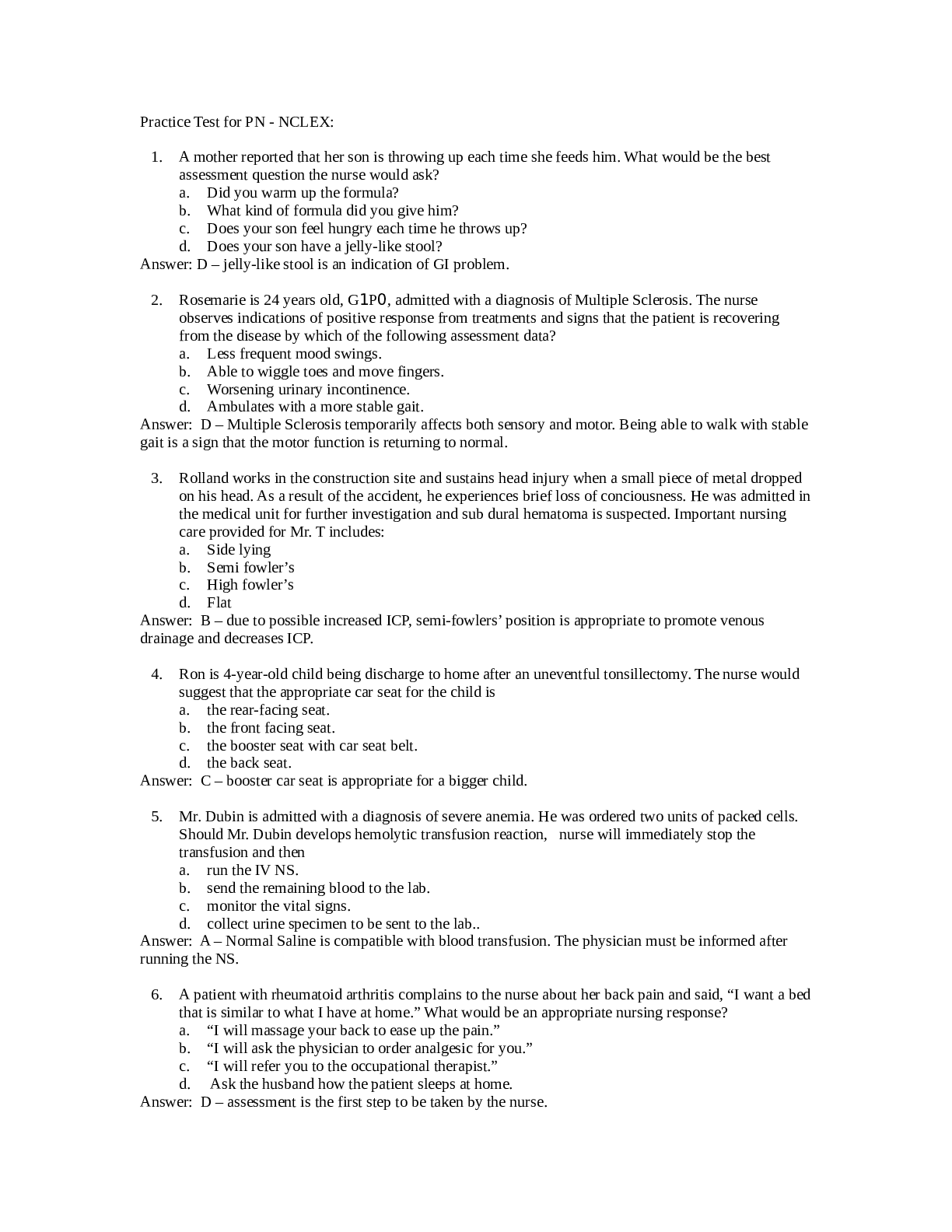
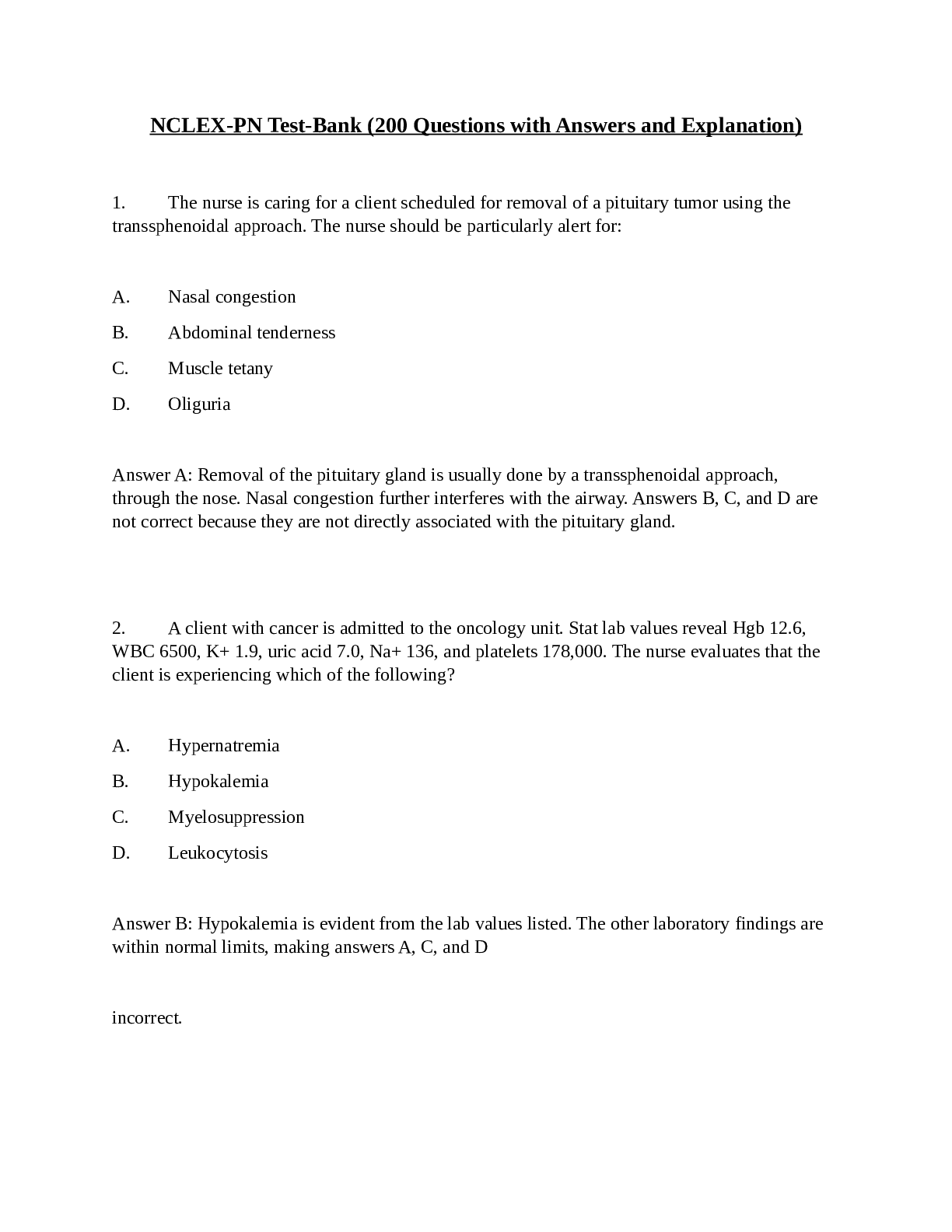

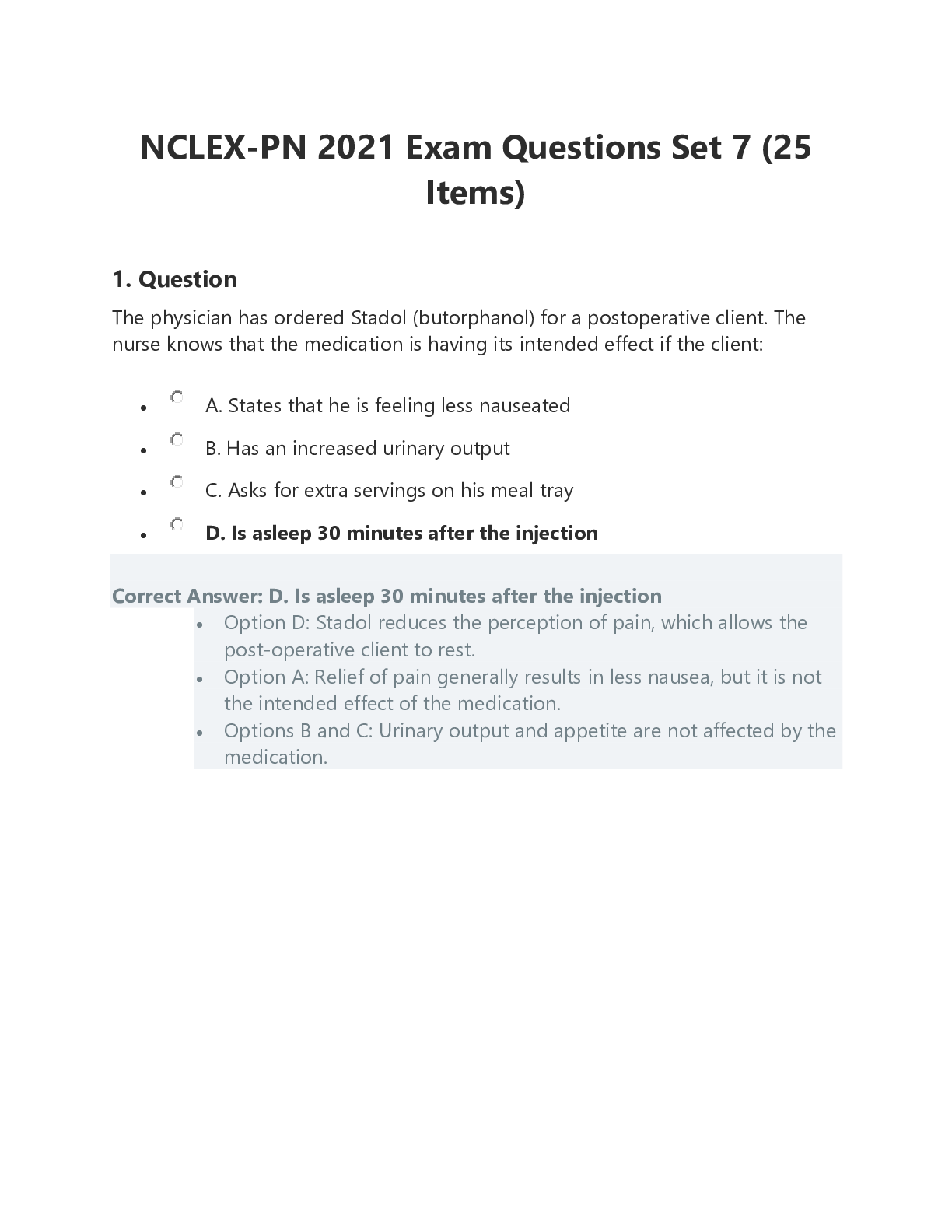

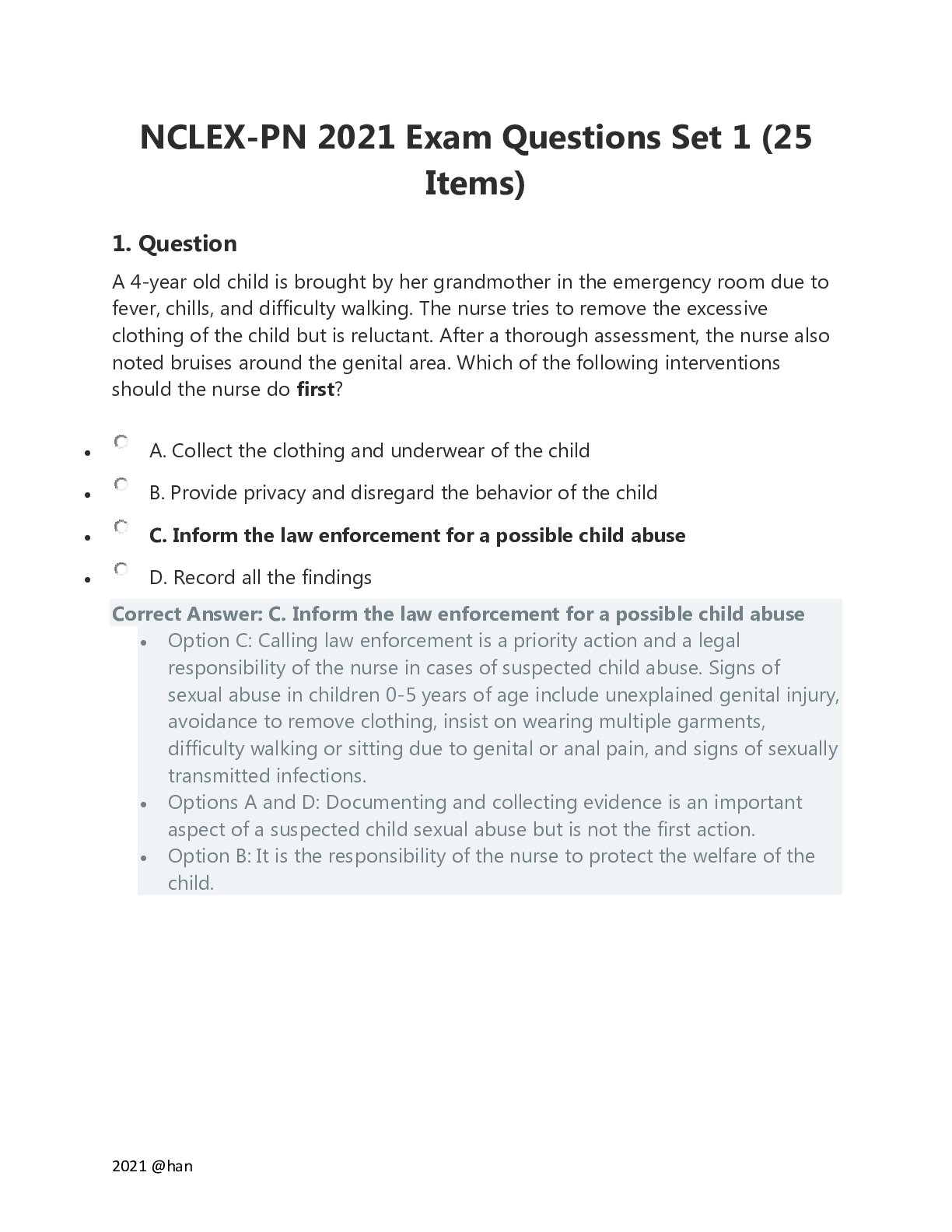
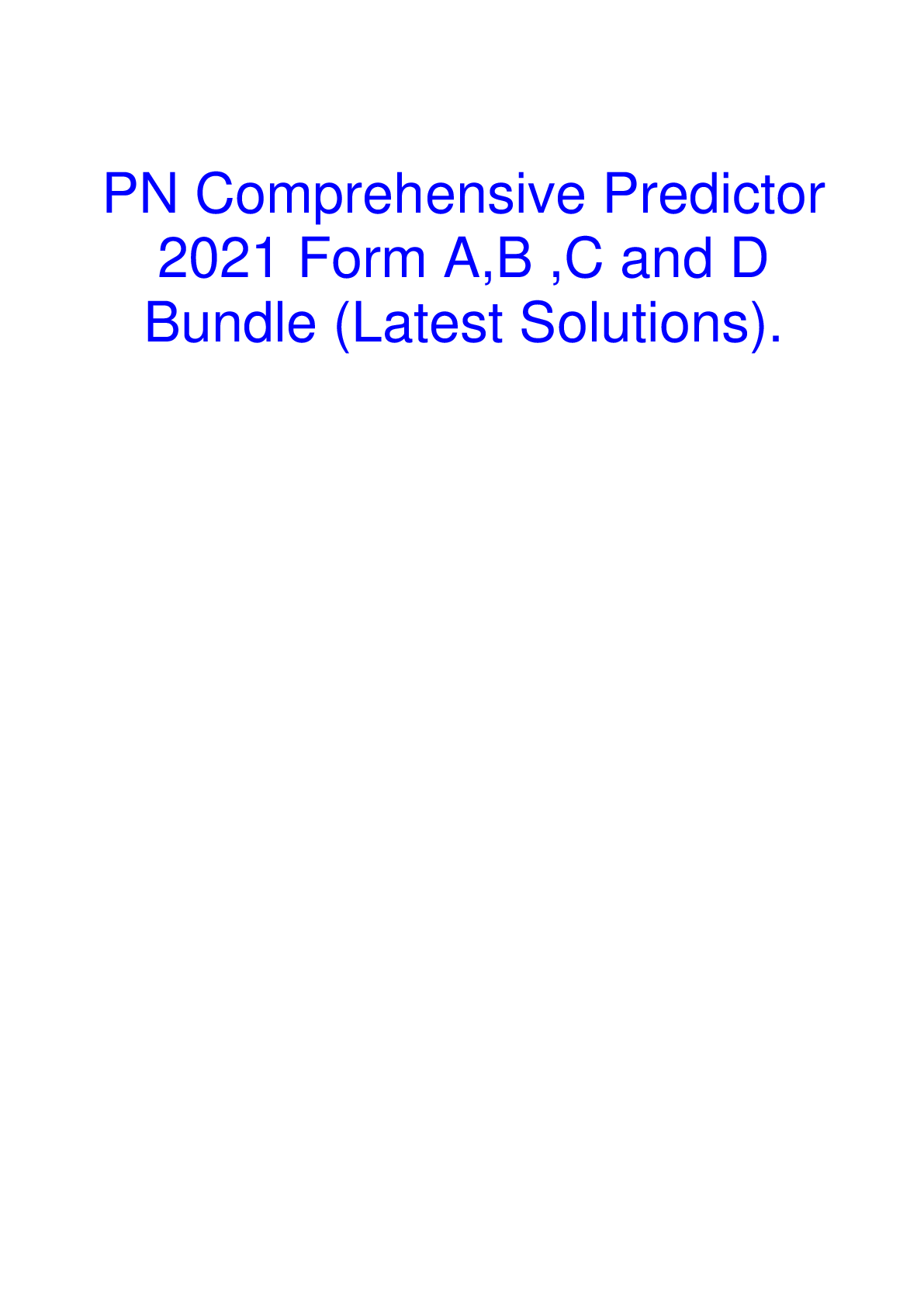
.png)
.png)
.png)
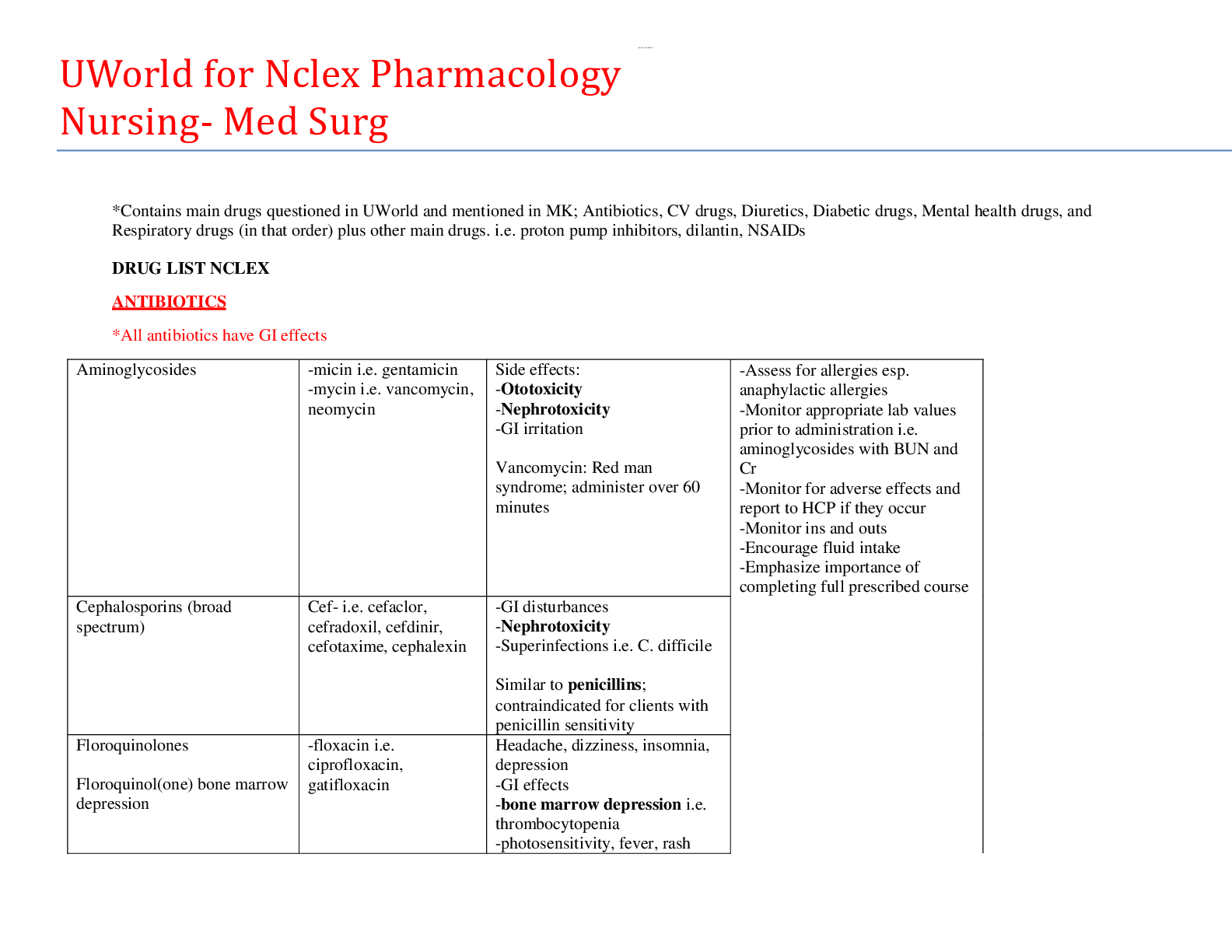

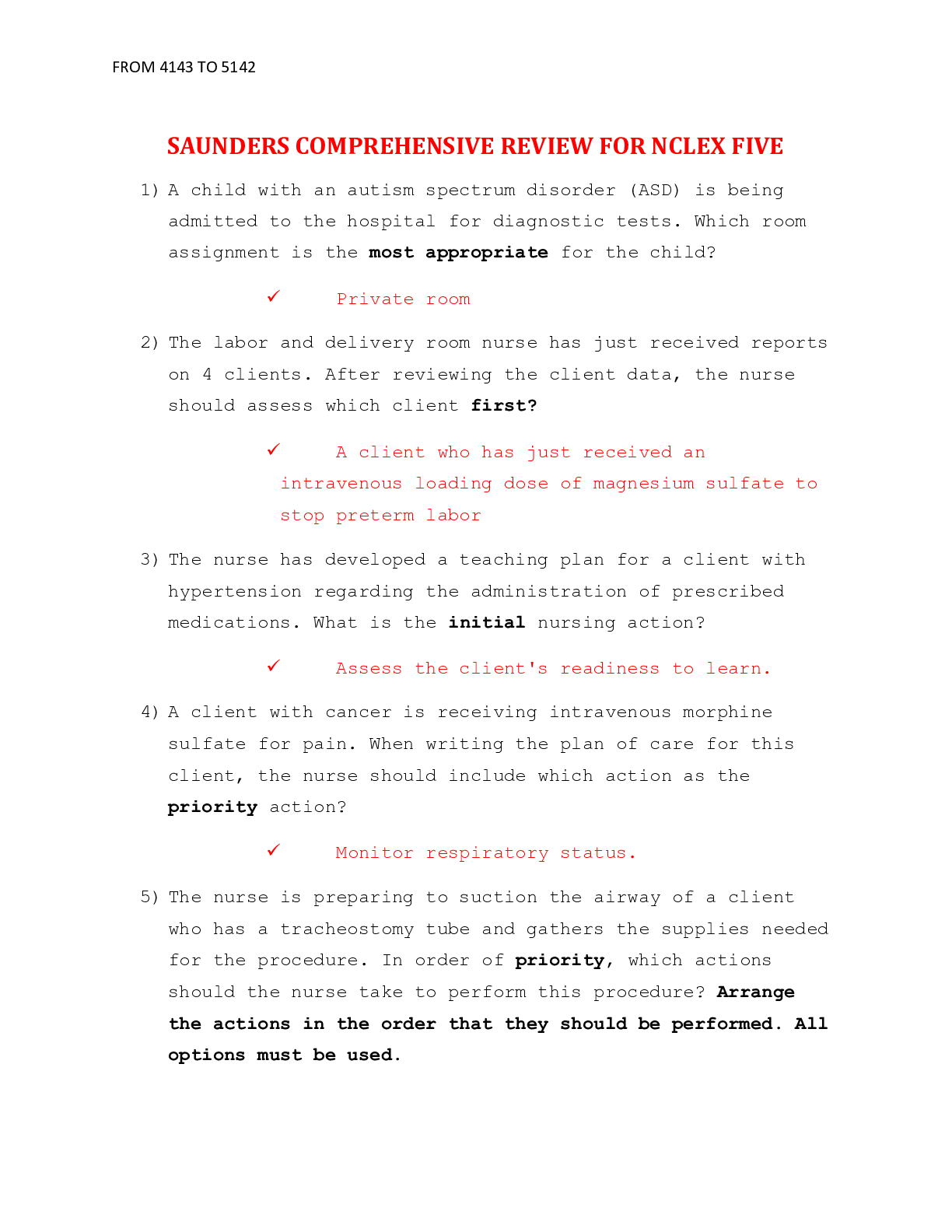
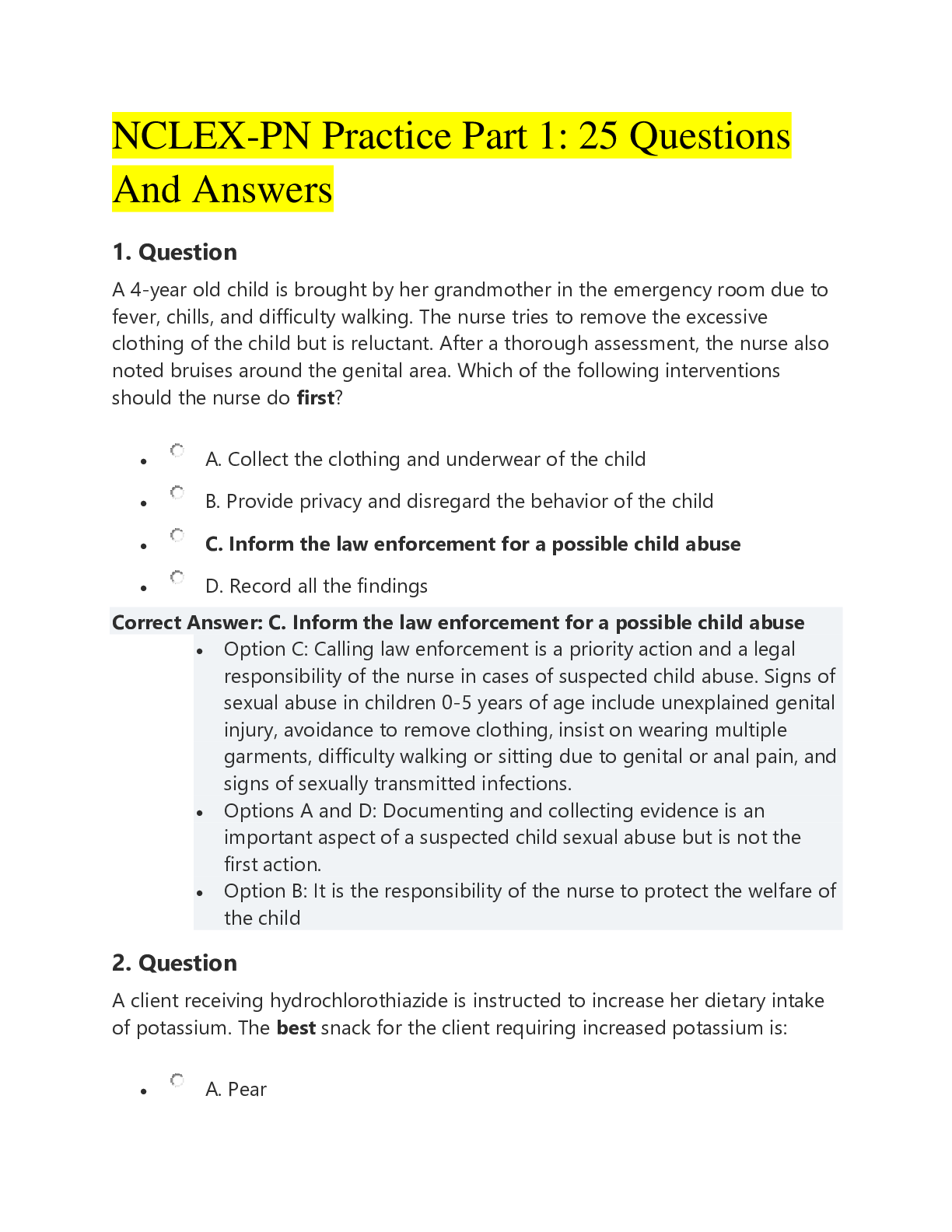
.png)
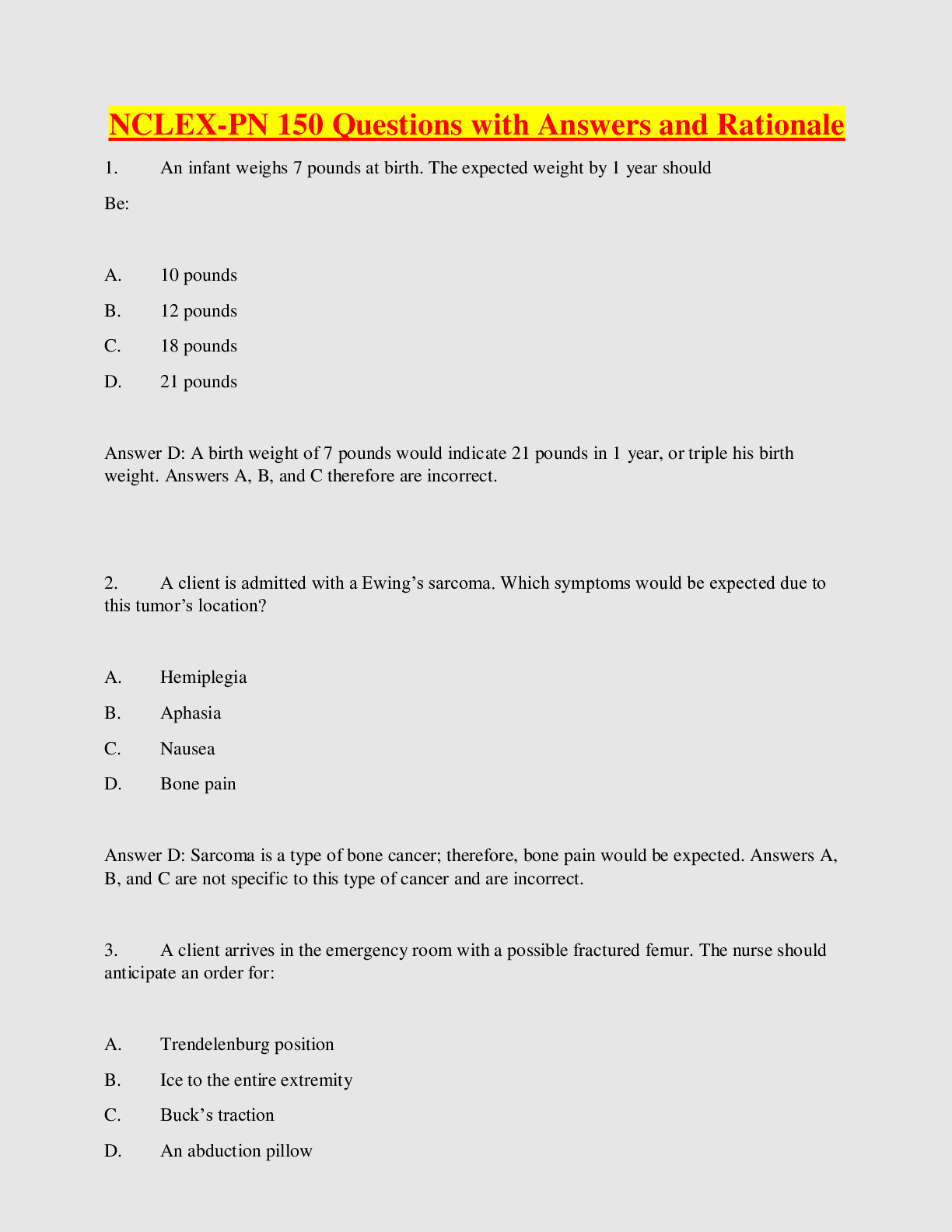


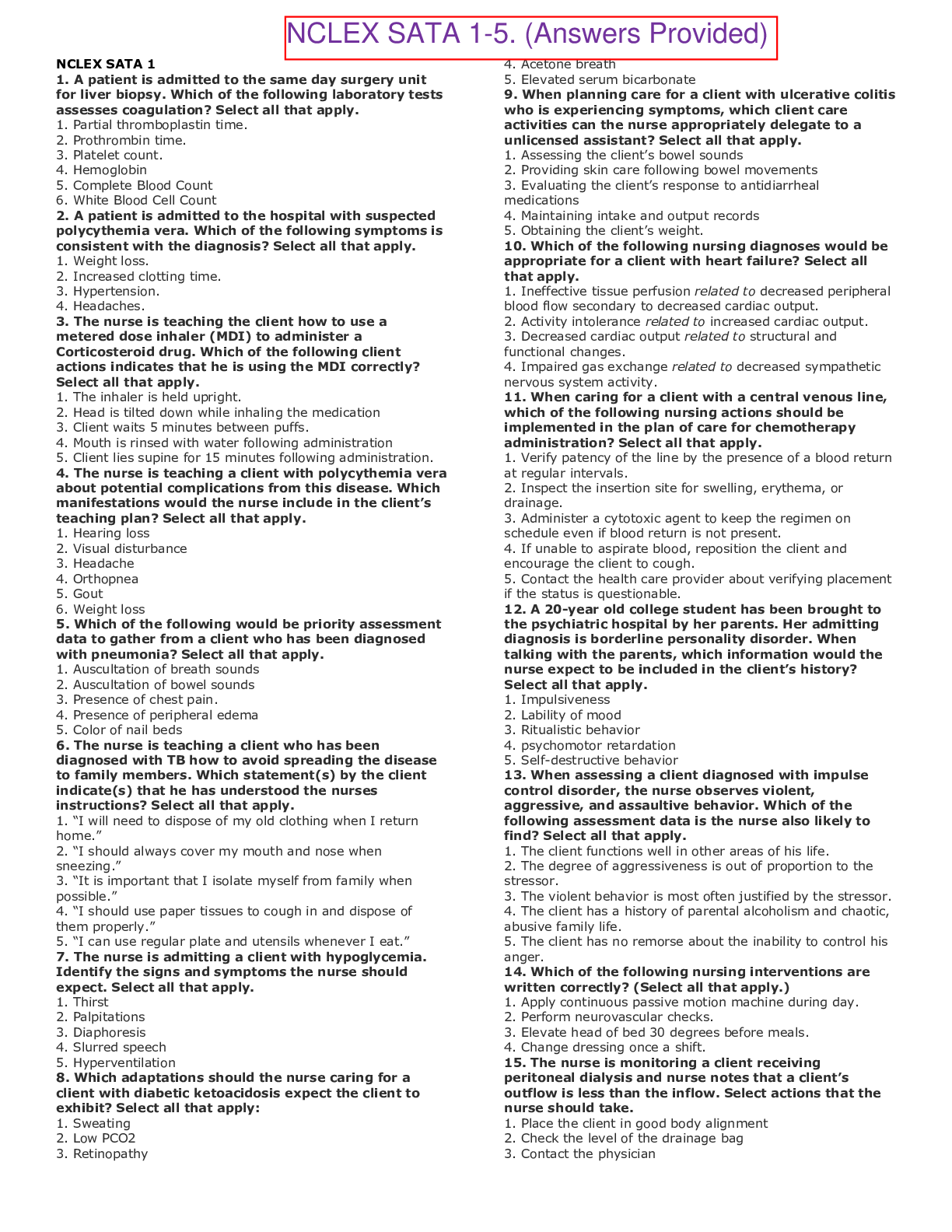


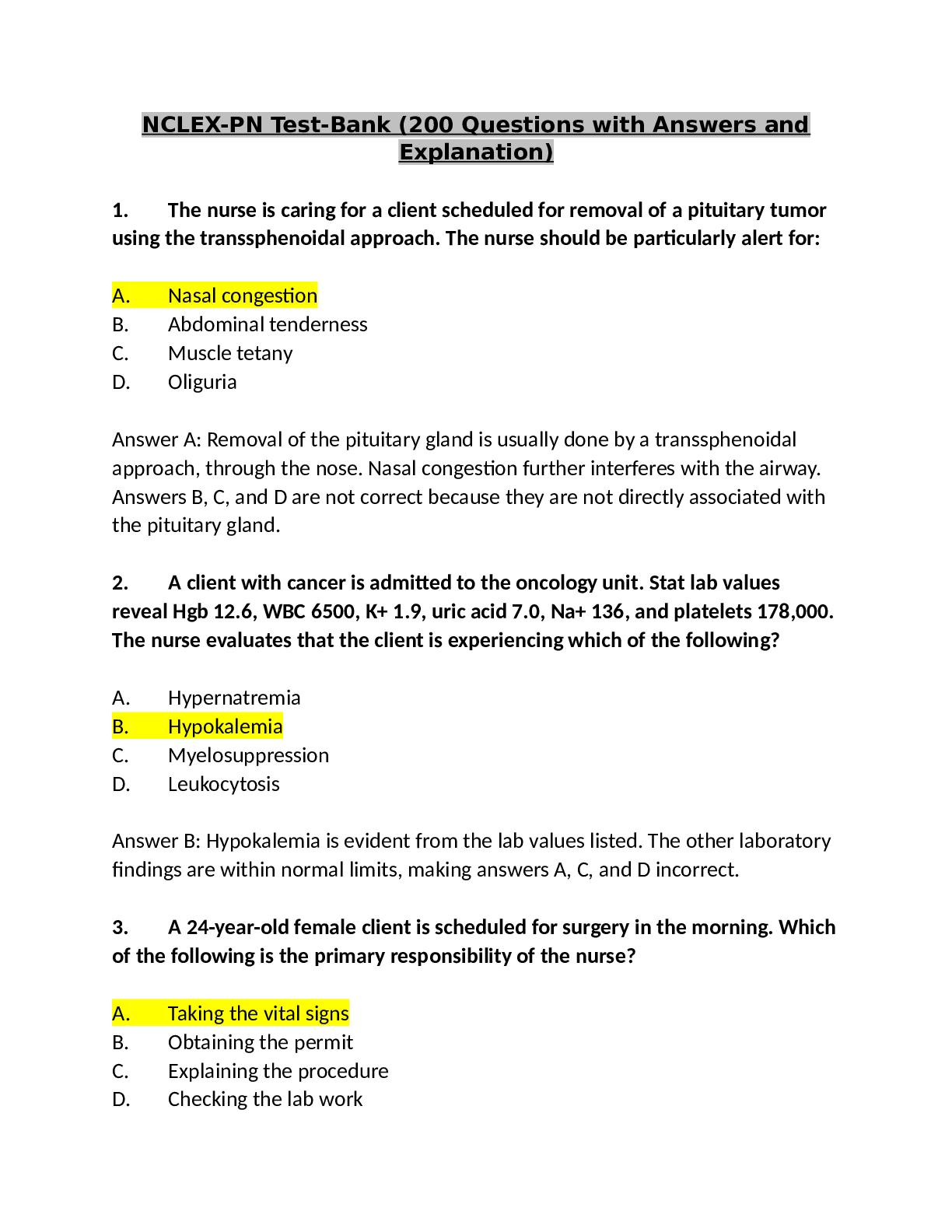

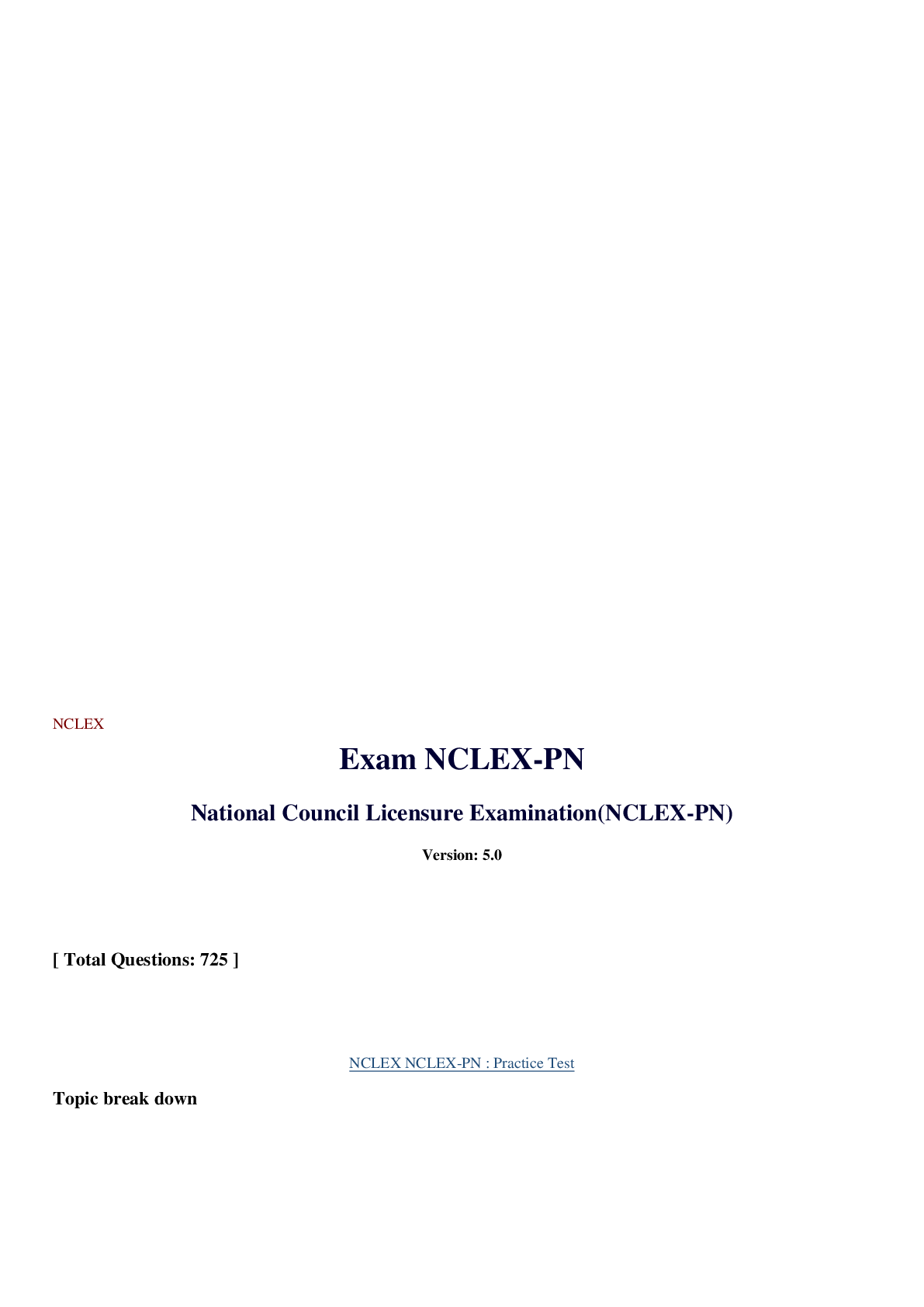
 Latest 2022-2023.png)
.png)

